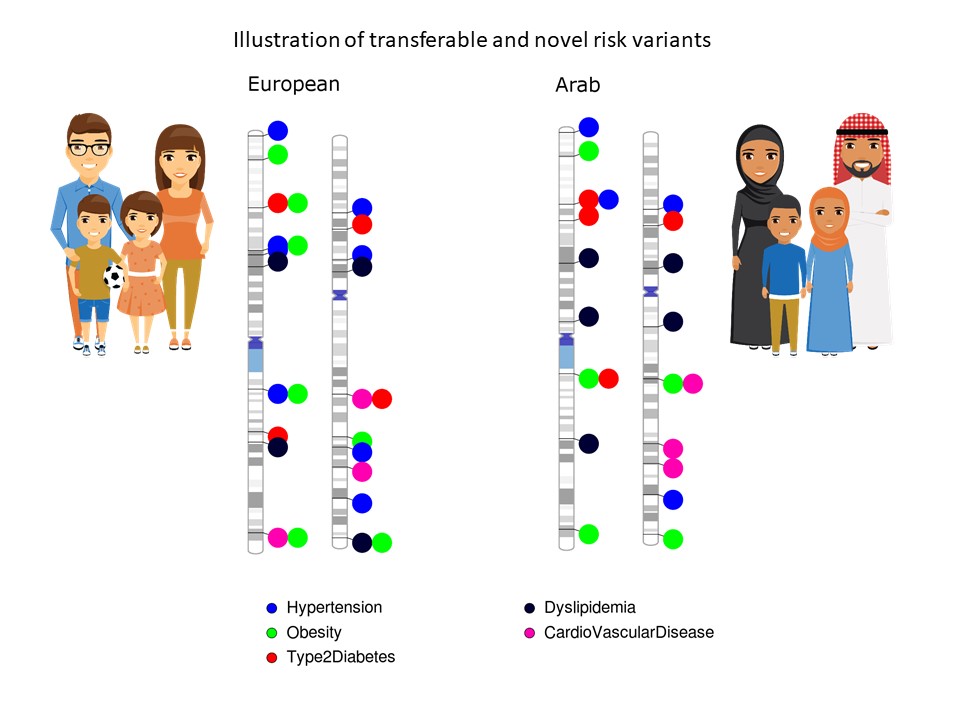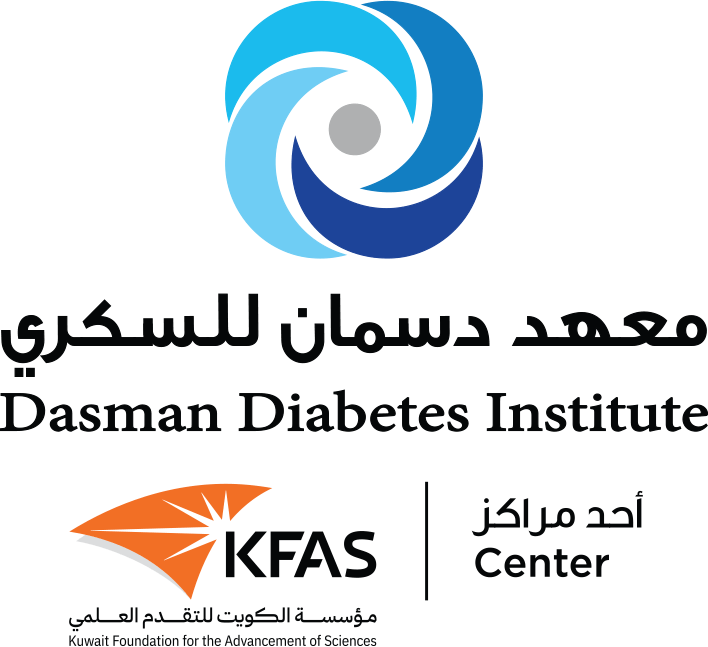
It is in our genes!
Published on 24/09/2020
New research study highlights differences in genetic risk for metabolic disease.
In a recently published article in the Human Genetics Journal, Professor Fahd Al Mulla, Chief Scientific Officer, Dr Thangavel Tharanj, Principal Scientist of the Genetics and Bioinformatics Unit, Prashantha Hebbar, Research Associate, and their teams compare genetic risk markers for metabolic diseases, like diabetes, between Arab and European populations.
Genome-wide association studies (GWAS) are commonly used in genetics research to link specific genetic variations to a disease. Researchers scan the genomes, or complete sets of DNA for these variations, and link them to a disease. This information is then used to develop better strategies for detection, treatment and prevention of that particular disease. However, most GWAS data is used to identify metabolic disorders from European populations. As we have shown earlier (here), our genetic makeup is highly influenced by gene-environment interactions, or the effect of our lifestyle on the expression of certain traits in your DNA.
While metabolic diseases are common among the Arab population, there is limited data from GWAS studies.
“Metabolic disorders, such as diabetes, have reached ‘slow-moving pandemic’ status, thanks in large part to the global shift towards sedentary lifestyles and urbanisation,” says Thangavel Thanaraj at the Dasman Diabetes Institute in Kuwait. “To handle this considerable health challenge, we must first understand whether the genetic loci that have been linked to metabolic traits are transferable to all population groups. Few studies have attempted this for the Arab population.”
In this study, Dr Thanaraj, Prof Fahd Al-Mulla, Prashantha Hebbar, and other scientists from the Middle East, Finland and Canada, conducted a meta-analysis that compared published GWAS data from two Kuwaiti Arab groups to data from the global 1000 Genomes Project. The team searched for genetic associations or variations in genes and pathways linked to 13 metabolic traits of a particular disease.
‘The research team identified 821 variants from 251 genes. 95% of the these genes were already linked to metabolic disorders.’DDI’s research team identified 53 new variations specific to the Arab population in the remaining genes.
“We expected to find new variants,” says Hebbar. “Regional cultural practices, including consanguinity (marriage within families) and living in isolation in tribes, has led to increased inbreeding and considerable, often damaging, alterations to the gene pool.”
GWAS studies like this one can be the start to an era of personalized medicine. With our current practice, we use a ‘one-size fits-all’ approach to medicine rather than focusing on the patient as an individual.
“Our study provides valuable insights into the causal signatures for metabolic disorders in the Middle East, and takes us a step closer to personalized medicine initiatives,” says Al-Mulla.
We aim to conduct further studies that can help in disease diagnosis, management and prevention in the region.
This article has been featured in Nature Middle East.


